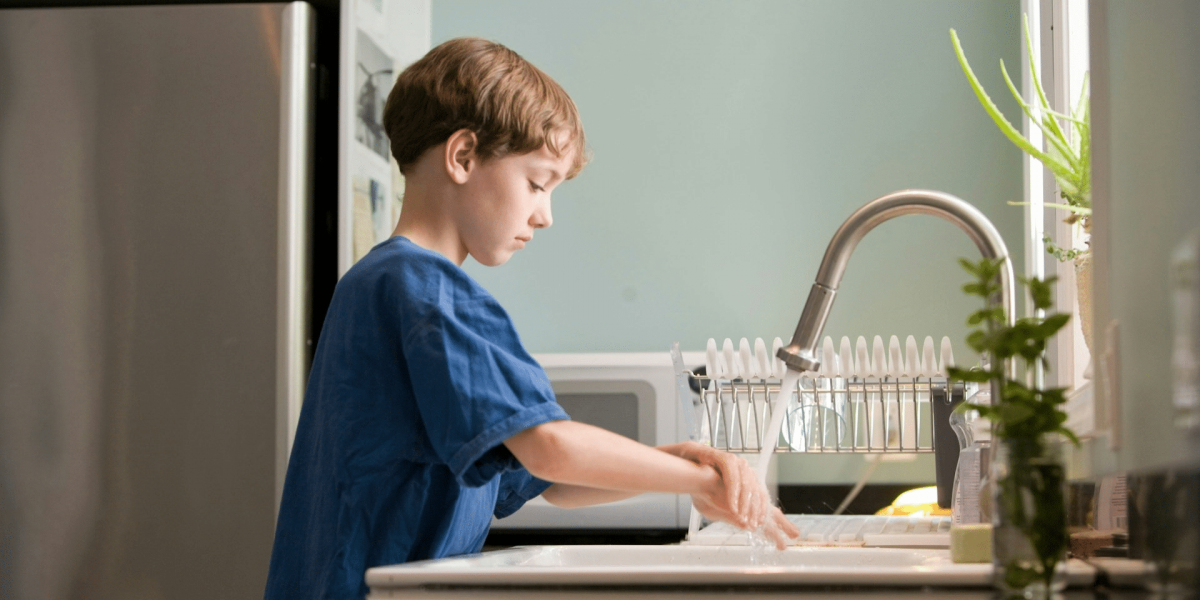We all know the feeling: a tickle in your throat, a coworker sniffling at their desk – the dreaded cold season is upon us. You scramble to stock up on tissues, cough drops, and maybe even some questionable immunity-boosting concoctions from the internet. But there’s one mighty weapon in your arsenal that’s often overlooked: the humble handwashing.
Yes, washing your hands is the unsung superhero of your health. As a study published in the Journal of Applied Microbiology points out, proper handwashing is “one of the most effective [ways] to prevent the spread of infections.” Those invisible hitchhikers, germs, can lurk on surfaces you touch every day, from doorknobs to keyboards. One absentminded hand-to-face contact later, and you’ve just invited them to set up camp in your body. Washing your hands regularly disrupts this germ party, significantly reducing your chances of getting sick.
But how exactly does washing hands transform you into a hygiene superhero? Let’s delve deeper into the magic of suds and water.
Scrub-a-Dub-Dub: The Science Behind Effective Handwashing
Imagine your hands are a microscopic battlefield. On one side, you have a ruthless army of germs, viruses, and bacteria. On the other side stands your soapy suds brigade, ready to fight back.
Here’s how washing hands disrupts the enemy’s plans: soap acts like a magnet, attracting dirt, germs, and grease on your hands. As you rub your hands together, the soap molecules trap these nasty invaders. Finally, rinsing with water washes them all down the drain, leaving your hands squeaky clean (and germ-free!).
Sounds simple, right? It is! But there’s a catch: technique matters. A quick rinse under the faucet won’t cut it. According to the Centers for Disease Control and Prevention (CDC), effective handwashing involves five key steps:
- Wet your hands with clean, running water. Warm or cold water works just fine.
- Apply enough soap to cover your entire hands. Don’t skimp on the suds!
- Lather your hands by rubbing them together briskly for at least 20 seconds. Think of singing “Happy Birthday” twice to make sure you scrub long enough.
- Don’t forget the nooks and crannies! Scrub your palms, backs of hands, between fingers, fingertips, and even under your nails.
- Rinse your hands thoroughly under clean, running water.
- Dry your hands with a clean towel or air dryer.
Following these steps ensures you’re giving those germs a thorough eviction notice.
Beyond Colds: When to Wash Your Hands Like a Superhero
Washing your hands becomes even more crucial in certain situations. Think of yourself as a superhero, constantly on guard against villainous germs. Here are some prime times to whip out your soapy superpowers:
- Before, during, and after preparing food. Raw meat, poultry, and eggs can harbor harmful bacteria. Regular handwashing during food prep helps prevent cross-contamination.
- Before eating. Think about all the surfaces you touch throughout the day. Washing hands before grabbing a bite stops germs from hitching a ride to your mouth.
- After using the bathroom. This one’s a no-brainer! Bathrooms are germ hotspots. Washing hands afterwards is essential to prevent the spread of bacteria.
- After blowing your nose, coughing, or sneezing. Coughs and sneezes propel germs into the air, and they can easily land on your hands. Washing hands prevents you from unknowingly spreading them to others.
- After touching animals. Our furry friends can carry germs too. Washing hands after petting or handling animals is important to protect yourself.
- After visiting someone who is sick. Hospitals and clinics can be breeding grounds for germs. Washing hands upon leaving prevents you from carrying those germs home.
By incorporating regular handwashing into your daily routine, you’re not just protecting yourself, you’re also protecting those around you. It’s a simple yet powerful way to break the chain of infection and keep everyone healthy.
Spreading the Word: Making Handwashing a Habit for Everyone
So, how do we turn everyone into handwashing superheroes? It all starts with education. Teaching children proper handwashing techniques from a young age instills a lifelong habit. Schools and public spaces can display informative posters reminding people of the importance of handwashing.
Furthermore, making handwashing stations readily available is crucial, especially in high-traffic areas like public restrooms, transportation hubs, and workplaces. Imagine entering a building and being greeted not just by a hand sanitizer dispenser (which, while helpful, isn’t a substitute for proper handwashing) but by a designated handwashing station with easy-to-follow instructions. These visual cues serve as constant reminders to wash your hands and make the healthy choice the easy choice.
Ultimately, promoting handwashing is a community effort. By working together, we can raise awareness, improve hygiene practices, and create a healthier environment for everyone. So next time you’re at the sink, remember: you’re not just washing your hands, you’re wielding the power of a superhero. With every lather and rinse, you’re disrupting the spread of germs and protecting yourself and those around you. Keep calm and wash on, fellow hygiene heroes!








